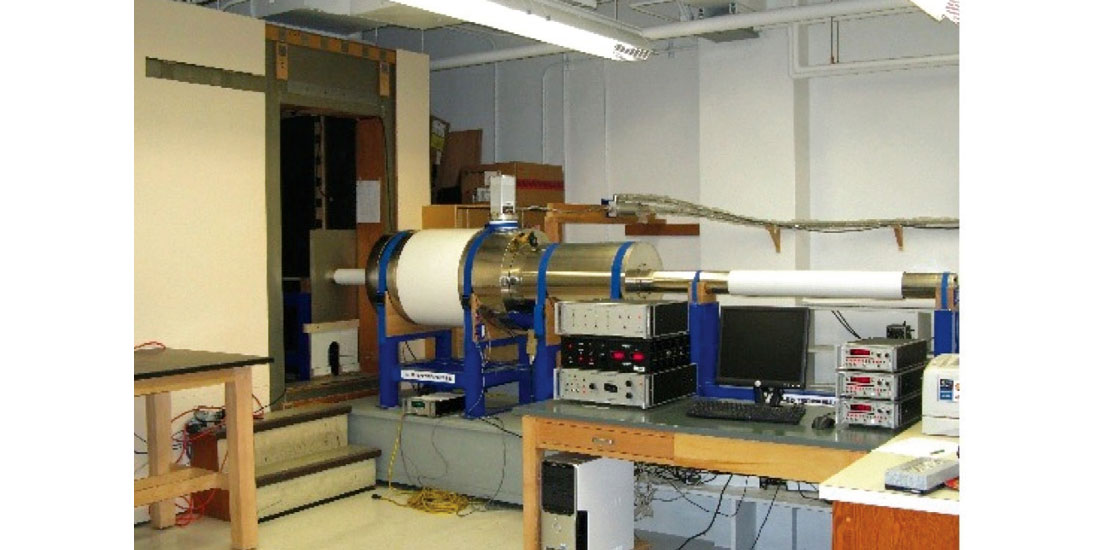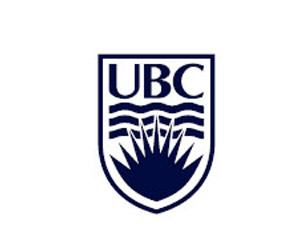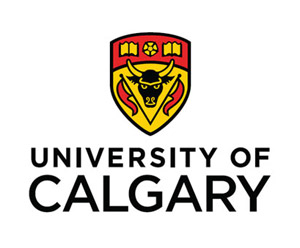
Geophysics Program at the Department of Physics, University of Alberta
Research and training of graduate students in the area of geophysics at the University of Alberta is carried out at the Department of Physics. At present, the geophysics group is composed of 12 faculty members, 48 graduate students and 14 postdoctoral fellows. Three members of the Geophysics group also hold cross-appointments with the Department of Earth and Atmospheric Sciences. Geophysical research spans the following two wide-ranging areas: i) Applied Geophysics and, ii) Global Geophysics and Planetary Dynamics. A number of professors in the group have diverse research programs that span the two aforementioned areas. A great dose of cross-fertilization exists between applied and global geophysicists in areas such as geomechanics, induced seismicity and global seismology.
Applied Geophysics (Potter, Sacchi, Schmitt, Van der Baan, Unsworth)
This group primarily works on resource exploration and exploitation and has recently steadily advanced in areas pertaining geothermal energy research (Helmholtz-Alberta Initiative). Applied geophysics has attracted funding from oil companies and geophysical services companies and has spearheaded industrial consortia for resource geophysics such as SAIG (Signal Analysis and Imaging Group), EGG (Experimental Geophysics Group) and MUSIC (Microseismic research consortium). Additional funding comes in the form of grants from Carbon Monitoring Canada, HAI (Helmholtz-Alberta Initiative), and contracts with the Alberta Geological Survey. An important aspect of the group is its insertion in the provincial needs pertaining to the education and training of geophysicists for the oil and gas industry.

The success of our group was also achieved through many years of academically and professionally recognized high-quality undergraduate and graduate education. For instance, recently our undergrad and postgrad students have been honored with six J. Clarence Karcher awards from the Society of Exploration Geophysicists. The award is provided in recognition of significant contributions by a young geophysicist of outstanding reputation, aged less than 35 years.
The following is a brief description of current research interests of faculty members working in applied geophysics.
Dr. David Potter’s research program is in the area of nano-magnetism. One of his projects uses a combined approach involving CT scanning and sensing magnetic nanoparticles to characterize heavy oil. Another project is focused on developing magnetic nanoparticle tracers for tracking fluid paths in fractures. Dr. Potter is also investigating the use of magnetic nanoparticle contrast agents that are mixed with proppants to determine the extent of hydraulic fractures. Dr. Potter has a joint appointment with the Department of Earth and Atmospheric Sciences. He is also one of founding members of the Integrated Petroleum Geosciences (IPG) professional MSc program at the University of Alberta.
Dr. Mauricio Sacchi’s research program includes the area of statistical and transform methods for seismic data processing, waveform imaging and inversion in applied and global seismology. Dr. Sacchi directs the Signal and Imaging Group (SAIG), a consortium for advanced research in seismic data processing and imaging. The group has become recognized for developing algorithms for multi-dimensional seismic data reconstruction, de-noising and for application of sparsity promoting methods for solving seismic processing problems.
Dr. Doug Schmitt carries out field and laboratory research. Current projects in the laboratory include determination of the effects of temperature and pressure on rocks saturated with CO2 and with bitumen, on the comparison of seismic and ultrasonic measurements in fluid saturated cracked rock, and on the anisotropy of tight unconventional resources. Field studies are concentrated on scientific drilling programs. Dr. Schmitt’s team is currently completing the study of a large drilling program in Idaho, North Sweden, the Alpine Fault in New Zealand and the Koyna region of India. Dr. Schmitt’s research also spans gemechanical modeling, stress determination and reservoir-induced seismicity.
Dr. Van der Baan’s research interests are in the intersection of signal processing for reflection and microseismic data. He is also interested in the study of geomechanical models and monitoring associated to microseismicity. Much of Dr. Van der Baan’s research is directed by the Microseismic Industry Consortium (co-hosted with the University of Calgary), which covers all aspects of microseismic data from acquisition, processing to interpretation. Dr. Van der Baan is one of founding members of the Integrated Petroleum Geosciences (IPG) professional MSc program at the University of Alberta.
Global Geophysics and Planetary Dynamics (Currie, Dumberry, Gu, Heimpel, Kravchinsky, Sutherland, Unsworth)
Global and planetary geophysics includes studies of geodynamics and planetary dynamics, global seismology, paleo-magnetism and geomagnetic field study, plate tectonics and continental dynamics climate and environment change. This group has gathered a steady number of publications in high-impact journals such as Nature and Nature Geoscience. It is important to stress that students working in this area also do find jobs in areas associated to oil and gas exploration. Oil companies and processing contractors have hired students with backgrounds in paleomagnetism, tectonophysics and global seismology. This is quite important because it signals that graduate training on problems of academic interest is not a handicap at the time of securing a career in industry. Group members have a diverse range of interest, which I hope to capture in the following lines.

Dr. Claire Currie’s research focuses on lithosphere dynamics and convergent plate margins. Dr. Currie and her students use numerical models and geophysical observations to study the upper 300 km of the Earth. Current projects address continental tectonics, subduction zone processes and mountain-building in Western North and South America. Dr. Currie’s research program is particularly interested in understanding the relationship between mantle/lithosphere dynamics and surface observations, such as deformation, topography, basin development and magmatism.
Dr. Mathieu Dumberry’s research is focused on the dynamics of planetary interiors. This includes convective flows in spherical shell geometries, the generation and evolution of planetary magnetic fields, the rotational dynamics of planetary bodies and fluid-solid interactions at interior boundaries. The work is mainly theoretical, including numerical simulations, although a particular emphasis on trying to explain specific observations with simple models of the dynamics.
Dr. Yu (Jeff) Gu is a global seismologist interested in all aspects of 3D crustal and mantle structural studies. He is also responsible for launching the Canadian Rockies and Alberta Network (CRANE) seismic array in Alberta. Dr. Gu and collaborators at the Alberta Geological Survey have also been conducting studies in the area of induced seismicity. The group recently investigated a cluster of events near the Cordel Field, west central Alberta and its potential relationship to a nearby disposal well.
Dr. Moritz Heimpel’s main research interest is the dynamics of planetary interiors, which involves the theoretical and numerical modelling of deep flow and convection and the generation of global magnetic fields. His group pursues research that addresses current scientific problems in Earth and planetary dynamics. Specific projects have advanced our understanding of the dynamical evolution of several of solar system planets, particularly those of Mercury, Earth, Jupiter, Saturn, Uranus and Neptune, as well as exoplanets.
Dr. Vadim Kravchinky studies magnetic properties of sedimentary rock and its implications for understanding geological, climatological and environmental changes. Dr. Kravchinsky directs the laboratory for paleomagnetism and petromagnetism at the University of Alberta. The laboratory carries out scholarly and industrial research in the following areas: Magnetostratigraphy, Cyclostratigraphy, Paleomagnetic dating of igneous rocks and sediments, Paleomagnetic core re-orientation and core correlation, determining of the paleocurrent flow direction in sediments using anisotropy of magnetic susceptibility, and magneto-environmental studies. The laboratory houses a cryogenic magnetometer funded by the Canadian Foundation for Innovation and the Province of Alberta.
Dr. Bruce Sutherland’s research focuses on the dynamics of the atmosphere and oceans, particularly as they are affected by density variations. This includes the study of waves, plumes and currents. Recent work has begun to explore particles in fluid flow, including the dispersion of ash from volcanic eruptions and the transport and deposition of sediments from river plumes, turbidity currents and shoaling internal solitary waves. Dr. Sutherland has a joint appointment with the Department of Earth and Atmospheric Sciences.
Dr. Martin Unsworth has a wide range of research interests that includes magnetolluric sensing for deep and environmental studies. His group has carried out MT sensing fieldwork at the Tibetan Plateau, Eastern Anatolia, Canadian Cordillera, Taiwan, Bolivian Puna and Mexico’s Chicxulub Impact Crater. His group has also carried out MT surveys for monitoring nuclear waste in Amchitka Island in the central Aleutian Islands. Dr. Unsworth is also the Canadian Lead, Geothermal theme, for the Helmholtz-Alberta Initiative (HAI). This program carries out structural and 3D geological and geophysical studies of parts of the Alberta Basin to understand the geothermal potential of the region. Dr. Unsworth has a joint appointment with the Department of Earth and Atmospheric Sciences.
Summary
The University of Alberta geophysics group recognizes that the success of our research program stems in large part from adopting a multidisciplinary approach incorporating ideas from physics, chemistry and Earth sciences. The group continuously fosters collaboration with scientists in the Department of Earth and Atmospheric Sciences, among other departments at the University of Alberta, and at other institutions. Through these activities and environment, the group is able to advance knowledge in Earth sciences, contribute to the education of undergraduate and graduate students, train professionals for careers in the future Alberta economy, and provide broad educational opportunities in geophysics to the wider community.
More information:
- Geophysics Research at the University of Alberta: http://www.physics.ualberta.ca/Research/Geophysics.aspx
- Helmholtz-Alberta Initiative, Geothermal Energy theme: http://tinyurl.com/l2x4b8s

Acknowledgements
Thanks to all members of the geophysics research area at the Department of Physics, University of Alberta, for providing input for this article. I would also like to thank Suzette Chan for proof reading and formatting the material.














Join the Conversation
Interested in starting, or contributing to a conversation about an article or issue of the RECORDER? Join our CSEG LinkedIn Group.
Share This Article